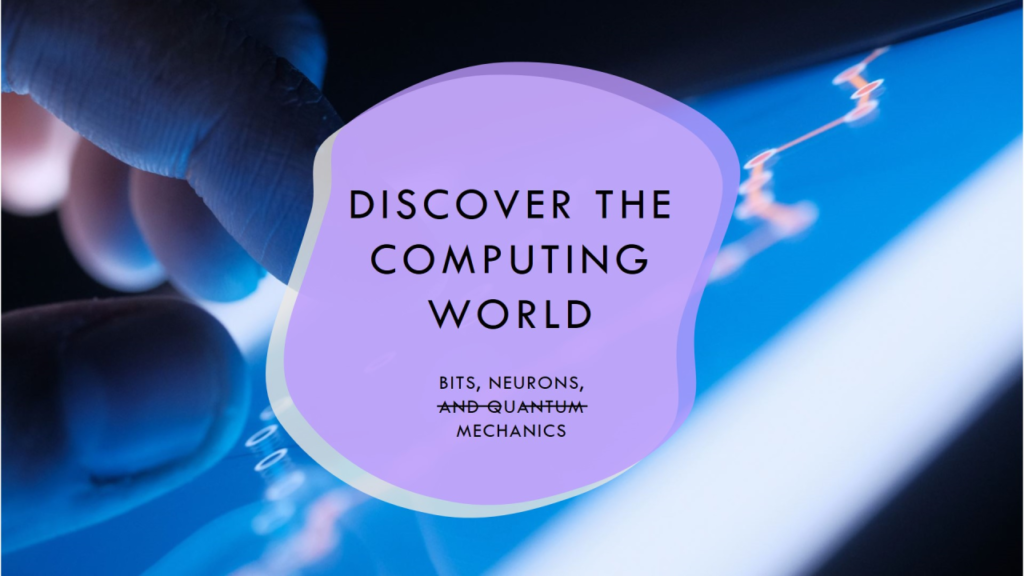
As technology rapidly evolves, the landscape of computing continues to diversify, offering new paradigms each with unique capabilities and applications. Among these, Bit Computing, Neural Computing, and Quantum Computing stand out as transformative approaches. Each offers unique approaches to processing information and understanding their distinctions, architectures, applications, and implications for cybersecurity is crucial for leveraging their potential and preparing for future advancements.
1. Bit Computing
How It Works: Bit computing forms the foundation of classical computing, operating on binary logic where the fundamental unit is the bit, which can be either 0 or 1. Classical computers perform calculations using binary arithmetic and logical operations facilitated by transistors and logic gates.
Architecture:
- Central Processing Unit (CPU): The heart of a classical computer, executing instructions and performing calculations.
- Memory: Stores data and instructions. Components include RAM (Random Access Memory) and storage drives (HDDs or SSDs).
- Logic Gates: Perform operations based on binary inputs. Basic gates include AND, OR, and NOT.
Examples:
- Personal computers, servers, and most consumer electronics.
- Operating systems such as Windows, macOS, and Linux.
Security Risks:
- Cyber Attacks: Susceptible to a range of threats including malware, ransomware, and phishing.
- Data Breaches: Conventional encryption methods, though robust, can be vulnerable to sophisticated attacks.
How to Use in Cyber Security Controls:
- Encryption: Bit-based algorithms like AES (Advanced Encryption Standard) and RSA (Rivest–Shamir–Adleman) provide strong data protection.
- Firewalls and Anti-virus: Traditional security measures utilize bit computing to monitor and prevent unauthorized access and malware.
Future Usage:
- Hybrid Systems: Classical computing will increasingly integrate with neural and quantum systems to address complex problems.
When to Use:
- General Purpose: Ideal for most everyday tasks and applications where classical computing methods are well-established and efficient.
2. Neural Computing
How It Works: Neural computing draws inspiration from the human brain and is based on artificial neural networks (ANNs). These networks consist of interconnected nodes (neurons) that process data similarly to biological neural networks.
Architecture:
- Neurons: Basic units that receive inputs, apply weights, and produce an output.
- Layers: Includes input, hidden, and output layers, each transforming data to recognize patterns and make decisions.
- Activation Functions: Functions like ReLU (Rectified Linear Unit) and sigmoid determine the output of neurons based on their inputs.
Examples:
- Applications: Image and speech recognition, natural language processing, and recommendation systems.
- Platforms: Weka, Apacje MxNet, TensorFlow, PyTorch, and Keras are some of the popular frameworks for developing neural networks.
Security Risks:
- Adversarial Attacks: Neural networks can be manipulated by inputs designed to deceive the system.
- Privacy Issues: Training data can potentially leak sensitive information if not properly managed.
How to Use in Cyber Security Controls:
- Anomaly Detection: Neural networks can identify unusual patterns and behaviors, aiding in threat detection.
- Fraud Detection: Employed in financial systems to detect and prevent fraudulent transactions.
Future Usage:
- Enhanced Models: Continued advancements in network architectures and training methods will lead to more sophisticated models capable of handling increasingly complex tasks.
- Integration with AI: Neural computing will remain central to AI developments, expanding its applications and capabilities.
When to Use:
- Pattern Recognition: Best suited for tasks involving large datasets and the need for pattern recognition and learning from data.
3. Quantum Computing
How It Works: Quantum computing leverages the principles of quantum mechanics, such as superposition and entanglement, to process information. Quantum bits (qubits) can exist in multiple states simultaneously, enabling quantum computers to solve certain problems much faster than classical computers.
Architecture:
- Qubits: The fundamental unit of information, capable of representing 0, 1, or both 0 and 1 at the same time.
- Quantum Gates: Operations that manipulate qubits to perform computations. Examples include the Hadamard gate and CNOT (controlled-NOT) gate.
- Quantum Circuits: Complex arrangements of quantum gates to execute quantum algorithms.
Examples:
- Current Systems: IBM Quantum Hummingbird, Rigetti, Google’s Sycamore, and D-Wave’s quantum annealers.
- Potential Applications: Optimization problems, cryptographic algorithms, and complex simulations.
Security Risks:
- Cryptographic Threats: Quantum computers could potentially break widely used encryption methods, such as RSA and ECC (Elliptic Curve Cryptography), by efficiently solving problems that are intractable for classical computers.
- Error Rates: High error rates and qubit instability are significant challenges in building reliable quantum computers.
How to Use in Cyber Security Controls:
- Quantum Cryptography: Quantum key distribution (QKD) provides theoretically secure communication channels resistant to eavesdropping.
- Post-Quantum Cryptography: Research is focused on developing cryptographic algorithms that can withstand attacks from quantum computers.
Future Usage:
- Some Breakthroughs: Quantum computing holds the potential to revolutionize fields such as materials science, drug discovery, and complex optimization.
- Scalability: Advances are needed to build more stable and scalable quantum systems for practical applications.
When to Use:
- Complex Problems: Best suited for solving complex problems that are infeasible for classical and neural computing methods, such as certain cryptographic challenges and optimization tasks.
Conclusion
Each computing —Bit, Neural, and Quantum—brings its own strengths and applications to the table. Bit computing remains the cornerstone of everyday technology, neural computing excels in data-driven AI applications, and quantum computing promises to transform fields requiring complex computations and optimization. Understanding when and how to use these different types of computing is essential for effectively leveraging their capabilities and preparing for future advancements.
As technology continues to evolve, staying informed and adaptable will be key to harnessing the full potential of these diverse computing paradigms. Whether for general-purpose tasks, advanced AI applications, or solving intricate problems, the future of computing offers exciting opportunities and challenges.
